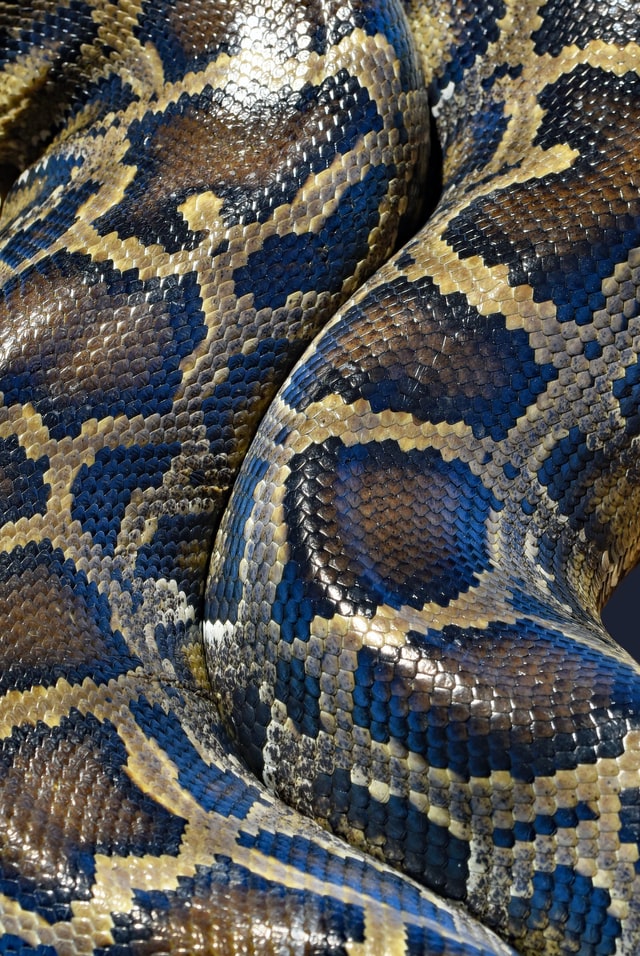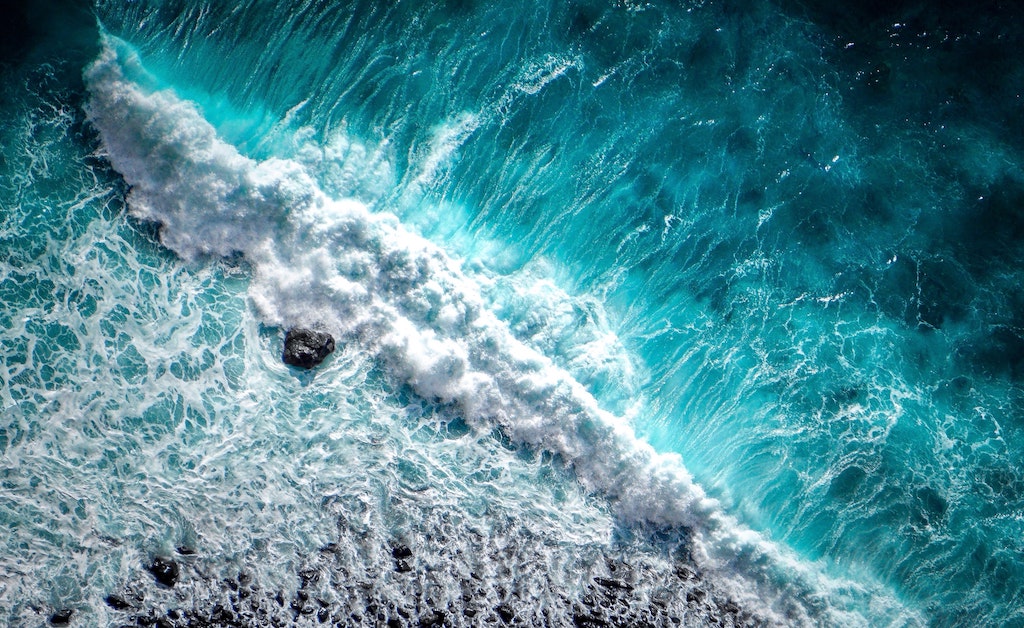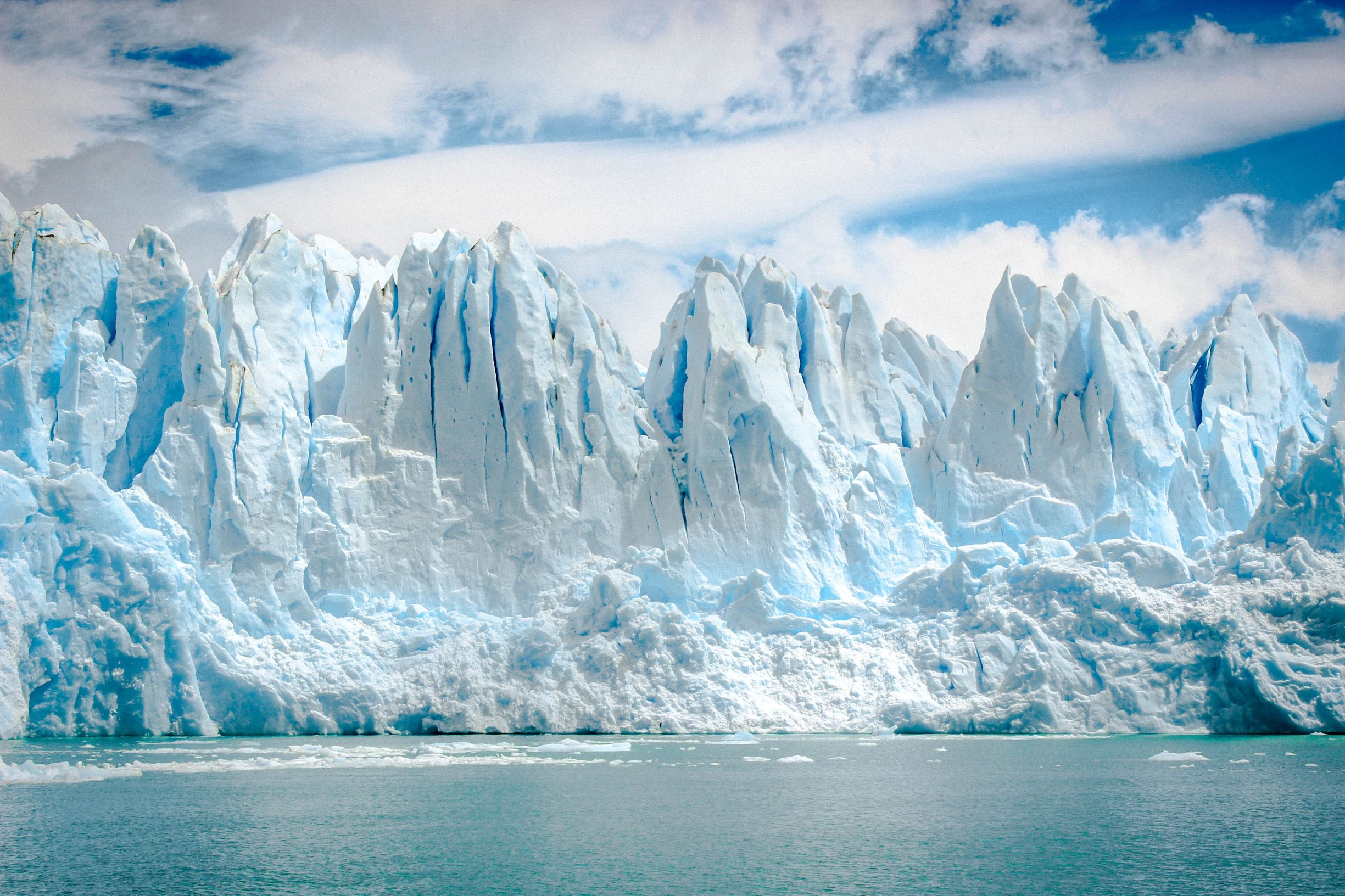Written by: Kendra Treichel
Florida has one of the most unique bio-landscapes of any place on earth. Everglades National Park ranks among the world’s largest wetland systems and is critically important for sustaining a rich diversity of local and introduced species. The turquoise waters surrounding Florida support a world-renowned recreational fishing industry. To the west lies the Gulf of Mexico, home to many large charismatic marine species. To the south, the picturesque Florida Keys, a series of islands each stunning in their own right. To the east, the vast Atlantic Ocean. Connecting all three, the third-largest coral reef tract in the world, spanning over 300 miles.
Every single one of Florida’s remarkable ecosystems are currently facing many threats. Two major concerns are global climate change and the introduction of damaging invasive species. Although some situations within these environments seem grim, Florida conservationists have come up with novel ways to combat them. The use of genetics to alter biological landscapes is gaining traction in many Florida-based conservation projects. This approach has proven promising, and offers hope in an otherwise bleak battle against global system changes.
Florida’s Coral Reefs
Corals are, in fact, animals! They depend on a type of algae that lives inside their polyps. Corals receive oxygen from the algae, and the algae receive protection – thus forming a mutualistic symbiotic relationship.Coral bleaching is a process whereby extreme heating events cause the corals to expel their algal symbionts. Although coral bleaching can occur naturally, human activity has exacerbated the process over the last three decades. When these heating events are too intense for too long, as is commonly the case now, corals are unable to recover their algal symbionts, and mass mortality occurs.
After these bleaching events scientists noticed that despite widespread coral mortality, some corals were able to survive. By selectively breeding for those species that survived, researchers at the University of Miami (UM) are hoping to produce more heat-tolerant corals. Dr. Chris Langdon with the Ocean Acidification Coral Laboratory at UM lovingly refers to these hardy species as “super corals”. Coral species able to withstand not only increased heat stress, but also acidified waters, are called “super, super corals”. Also at the University of Miami, Dr. Diego Lirman’sRescue a Reefprogram outplants thousands of young corals every year, helping to bolster a coral community with thermally resistant species and genotypes. This method is not limited to only corals, but their algal symbionts as well. These efforts are only a tiny aspect of the university’s robust reef restoration efforts.

Photo by Daniel Öberg on Unsplash
Although these strategies have been very successful, coral reefs around the world remain at risk. Reef restoration cannot keep up with the many threats they face, such as bleaching, ocean acidification, and disease. Additionally, these interventions are reactive measures to a preventable problem. For sustained coral reef recovery, global climate change needs to be addressed. As an individual, you have the power to reduce your emissions through personal changes in your daily life. You also have the ability to influence political change by getting involved in politics and elections – vote for officials that include coral protection goals in their campaigns. If their views are not listed, reach out to them to find out their stance on the issue. Many voices are needed for large companies and governing bodies to hear them so meaningful changes can be made. Coral reefs are invaluable to both humans and the animals that call them home. They provide jobs, contribute to medical research, and protect shorelines. Beyond their anthropocentric benefits, their most significant strength is simply that they are irreplaceable. The ocean is everyone’s backyard, and coral reefs are the garden. We all have a responsibility to tend this oceanic garden so future generations can witness the same wonders as us.
Florida Panthers
Prior to 1990, Florida panthers (AKA mountain lions, cougars, or pumas) were nearly decimated due to the expansion of urban environments and extensive hunting. An additional blow suffered by the creatures came from scientists themselves when they attempted to breed the cats in captivity. This strategy not only failed but further reduced the already dwindling population. By 1970 there were no more than 30 and possibly as few as 6 panthers left in Florida, the only population East of the Mississippi River! Naturally, inbreeding within the remaining population occurred as only a handful of individuals remained. This led to many physical and genetic disorders, including characteristically kinked tails and reproductive issues that further hindered the species’ success.

Photo by Leah Huyghe on Unsplash
Panthers were projected to be extinct within two decades if no intervention was taken. Researchers then introduced eight female panthers from Texas to curb inbreeding and increase the general population. This population was chosen because historically the populations were not separated and did reproduce with one another. They are also the closest living subspecies to the Florida individuals. Recent data suggests introducing the new cats tripled genetic diversity in the Florida population. This program is considered an enormous success and a stunning display of the importance of genetic diversity in a population. Although the scientific community is happy with these results, many unaddressed issues still endanger the magnificent panthers. For one, human development in the state continues to grow. To combat this development, Florida Ecological Greenways Network is identifying suitable panther (and other wildlife) habitat across the state, called “Critical Linkages”, to create a Florida Wildlife Corridor. Their goal is to provide safe passage for animals and allow them to expand their range. Their website is full of great content and information about Florida’s natural spaces and the animals that occupy them!
Invasive Species
Conservation is often perceived as protecting or restoring animal and plant populations. However, it can also mean the removal of a species that has become detrimental to an ecosystem. Florida is no stranger to invasive species that alter the biotic community. One animal that has been disproportionately damaging to Florida’s native wildlife is the Burmese python, assumed to have been released to the wild via the exotic pet trade in the 1970s.
Unfortunately, Florida is the perfect porridge for this invasive Goldilocks. The climate and food supply allowed large populations to establish quickly. The successful invasion of the Burmese python is also attributed to their reproductive ability; females lay up to 100 eggs every two years, reproducing many times throughout their lifespan. Pair all of this with a lack of predators large enough to consume them in Everglades National Park, and the python populations grew unhindered. By the early 2000s they had reduced the mammalian population in the Everglades by nearly 99%, mainly leaving only small rodents in their wake. Mammal population numbers remain this low to this day. To reduce the python stock, there is an open season for hunting them with no licenses or permits required. Another strategy being employed is putting radio transmitters on male pythons to locate females during mating events, allowing hunters to prevent breeding while contributing to scientific knowledge about population distribution.
Another species brought to Florida from the Indo-Pacific region through the pet trade is the red lionfish. These arguably beautiful fish are impressive specimens; they are covered in venomous spines, their stomachs can stretch to 30 times normal capacity allowing them to feed extensively, one female can lay up to 2 million eggs annually, and the egg masses include a repellent making them nearly undetectable to predators. Additionally, the eggs are buoyant, allowing them to migrate great distances and expand population ranges easily. Currently, lionfish are found throughout the coastal waters of the Atlantic, Caribbean, and Gulf of Mexico. Once established, they have been shown to reduce overall species populations in the surrounding area by up to 90%. In their native habitat, lionfish populations are managed by natural predators. However, in these introduced waters, very few animals eat them. As a result, humans need to intervene to reduce their numbers and help those of native species rebound. Like pythons, hunting is encouraged, and no licenses are required.

Photo by Wai Siew on Unsplash
The aforementioned tactics, though yielding some short-term benefits, are insufficient to keep up with lionfish and Burmese python breeding capabilities in the long run. To get a leg up on these invaders (pun somewhat intended), genetic modification of both species is currently being considered. This method would involve altering the genetic sequence(s) of males. When females then mate with altered males, they are incapable of producing female offspring. Effectively leaving only male snakes with no way to produce further offspring.
To prevent future infestations, like these pythons and lionfish, avoid supporting the exotic pet trade. Check your local laws to ensure the pet you are getting is permitted within the area. Always research an animal before you buy one, most are long-term commitments! And lastly, if you need to relinquish a pet, do so appropriately; your local SPCA is an excellent resource for pet relocation concerns.
Looking Forward
Gene sequence alteration for the use of conservation is still being tested. This approach is hotly debated; some argue gene manipulation is unnatural. Counterparts argue the existence of these species outside their normal range is unnatural, and only a result of human activity. As a famous, fictional mathematician once said while touring a theme park full of real dinosaurs, “life, uh, finds a way.” Jurassic Park may not be real, but its lessons should still be heeded. The ramifications of these changes are not fully understood yet, further testing is needed before large-scale use of the technology is possible. Yet overall, the results of gene alterations have the potential to outweigh the negative impacts made by the creatures – impacts that ultimately are on the hands of the humans that introduced them.
Genetics is a relatively new field of study, with the human genome only having been fully sequenced in 2003. For many years we understood there was a driving force inside our bodies that resulted in tangible changes over generations. Gregor Mendel was able to visually demonstrate this inheritable change through plants. Even then, it wasn’t until years later the mechanism controlling the phenomena was coined genetics. Today the use of genetics is invaluable in the field of medical research and human health advances. Next time you happen upon a zebrafish, make sure to thank them; they have been huge contributors to the body of knowledge regarding human diseases and disorders. This is because they share nearly 70% of our genetic material, many sequences of which are associated with disease. Due to their short generation time, they have provided medical insight into many conditions, such as cancers and muscular disorders. They are even capable of organ regeneration! This amazing adaptation is being studied to help humans with eye, heart, and even spinal afflictions.
As our grasp on the discipline tightens we will undoubtedly be able to use genetics more readily in the fight against global climate change. However, as effective as gene manipulation may be, it is only one tool among many others needed to fix the problem. We must all do our part and remain vigilant, for the problems we face now are long-term and without one single solution.
References
Burke, E. (2016). Why Use Zebrafish to Study Human Diseases? https://irp.nih.gov/blog/post/2016/08/why-use-zebrafish-to-study-human-diseases
Chapman, F. A., & Funicelli, N. A. (2016). A potential methodology for biocontrol of lionfish (Pterois spp.). Aquaculture, Aquarium, Conservation & Legislation, 9(6), 1331-1335.
Harvey-Samuel, T., Ant, T., & Alphey, L. (2017). Towards the genetic control of invasive species. Biological Invasions, 19(6), 1683–1703. doi:10.1007/s10530-017-1384-6
Hoyer, I. J., Blosser, E. M., Acevedo, C., Thompson, A. C., Reeves, L. E., & Burkett-Cadena, N. D. (2017). Mammal decline, linked to invasive Burmese python, shifts host use of vector mosquito towards reservoir hosts of a zoonotic disease. Biology Letters, 13(10), 20170353. doi:10.1098/rsbl.2017.0353
Jakub, L. M. (2020). Coral reefs get their genetic revolution. Retrieved from https://www.ehn.org/coral-reef-climate-change-solutions-2646423759.html
Johnson, W. E., Onorato, D. P., Roelke, M. E., Land, E. D., Cunningham, M., Belden, R. C., … & O’Brien, S. J. (2010). Genetic restoration of the Florida panther. Science, 329(5999), 1641-1645.
Johnston, M. W., & Purkis, S. J. (2015). A coordinated and sustained international strategy is required to turn the tide on the Atlantic lionfish invasion. Marine Ecology Progress Series, 533, 219-235.
Mote Marine Laboratory (2020) Coral Bleaching Early Warning Network. Retrieved from https://mote.org/research/program/coral-reef-science-monitoring/bleachwatch
Neimark, J. (2020) Researching Regeneration Through the Zebrafish. https://www.brainfacts.org/in-the-lab/animals-in-research/2020/researching-regeneration-through-the-zebrafish-100520
Ochoa, A., Onorato, D. P., Fitak, R. R., Roelke-Parker, M. E., & Culver, M. (2019). De Novo Assembly and Annotation from Parental and F1 Puma Genomes of the Florida Panther Genetic Restoration Program. G3: Genes|Genomes|Genetics, g3.400629.2019. doi:10.1534/g3.119.400629
Scientifica Magazine. (2021). https://www.youtube.com/watch?v=RPVmQ6qapoI
Seal, U. S., & Lacy, R. C. (1994). A plan for genetic restoration and management of the Florida panther (Felis concolor coryi). Report to the Florida Game and Fresh Water Fish Commission, Conservation Breeding Specialist Group, SSC/IUCN. White Oak Conservation Center, Yulee, Florida.
Tannen, J. N. (2020). Researchers share novel ways to restore South Florida’s coral reefs Retrieved from https://news.miami.edu/stories/2020/08/researchers-share-novel-ways-to-restore-south-floridas-coral-reefs.html
Team in Florida captures huge python using tracking devices (2019) retrieved from https://phys.org/news/2019-04-team-florida-captures-huge-python.html
Thompson, A. (2020). Cat Tale: The Wild, Weird Battle to Save the Florida Panther.
Van de Kerk, M., Onorato, D. P., & Oli, M. K. The Florida Panther: Past, Present, and Future.
Winchester, A. (2020, May 15). Genetics. Encyclopedia Britannica. https://www.britannica.com/science/genetics




